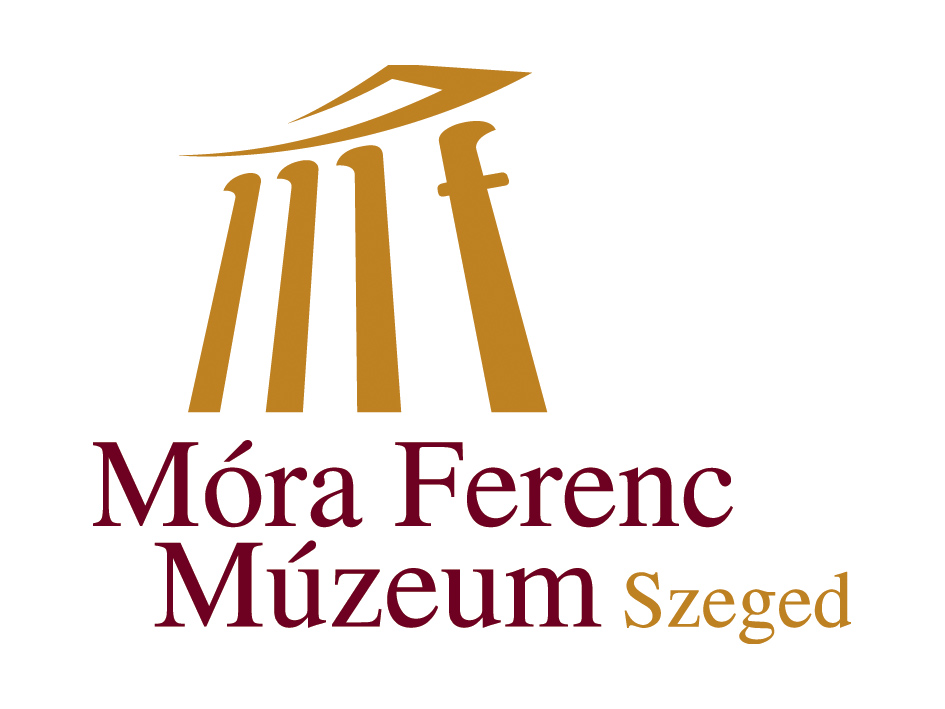The Tragedy of Man series
The first edition of Imre Madách’s The Tragedy of Man was published in 1861. Starting from the story of Adam and Eve, the play sensitively illustrates the social shortcomings of historical times and the author’s present, the hopelessness, and, at the same time, eternal hopefulness of human existence. The timeless ideas and inexhaustible visual world of The Tragedy of Man have inspired numerous artists from all branches of art over the past 150 years. The first illustrated edition of the work was published with full-page engravings by Mihály Zichy (1827–1906). The stagey costume scenes of the pages made between 1885 and 1887 impressively present the struggle of Adam and Eve in the scenes written by Madách.
The etchings by János Kass were commissioned in 1966 by the Magyar Helikon Publishing House to illustrate The Tragedy of Man. An interesting feature of the plates is that the artist worked on larger copper plates than the image size given by the publisher. Thus, the central scenes are the ones that appeared in the illustrated edition, and the smaller scenes framing them are present as a kind of marginal notes. The artist goes far beyond the scope of illustration; the series transforms Madách’s lines into an independent work, expressing what cannot be described in words. Compared to previous depictions, it counts as novelty that Kass highlights the scenes taking place in space and the “phalanster”. In these, he also displays some outstanding innovations of his time (e.g. satellites and other space technology devices). Kass shapes his own experience of the current era into an image. In this way, he also points out that The Tragedy of Man formulates perpetual moral lessons that every era and each individual can interpret as their own. The artist expressed his thoughts on The Tragedy as follows:
“The essence is constantly changing with the natural dynamics of time and movement. I am talking about my own time, obviously, the pragmatic world of the second half of the 20th century. The Tragedy is raw material in which the tragedy of people of all ages can be reflected.”
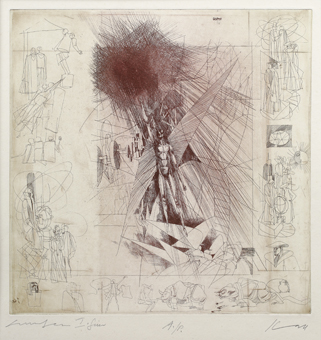
The Tragedy of Man, Scene I (Lucifer)
1966
etching, aquatint, paper
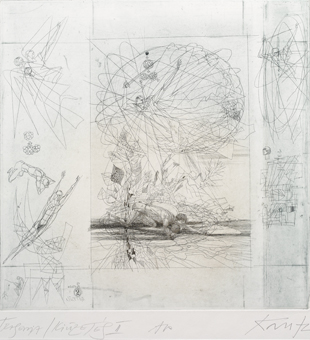
The Tragedy of Man, Scene II (Expulsion from the Garden of Eden)
1966
etching, aquatint, paper
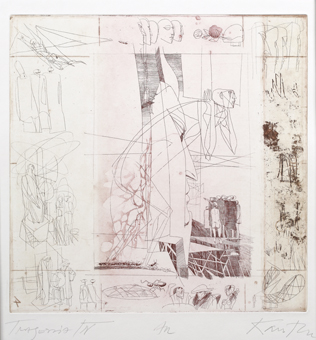
The Tragedy of Man, Scene III (Outside the Garden of Eden)
1966
etching, aquatint, paper
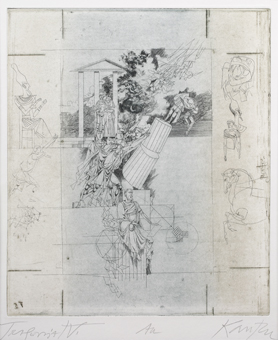
The Tragedy of Man, Scene IV (In Egypt)
1966
etching, aquatint, paper
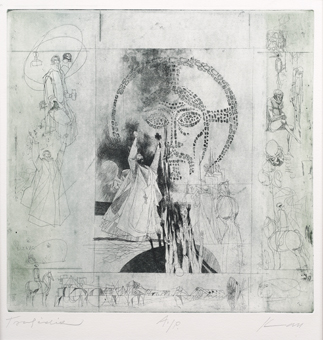
The Tragedy of Man, Scene V (In Athens)
1966
etching, aquatint, paper
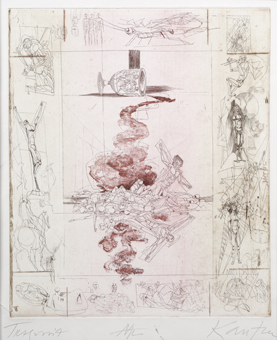
The Tragedy of Man, Scene VI (In Rome)
1966
etching, aquatint, paper
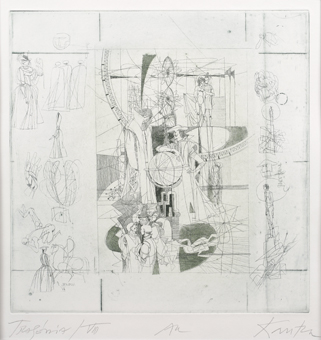
The Tragedy of Man, Scene VII (In Constantinople)
1966
etching, aquatint, paper
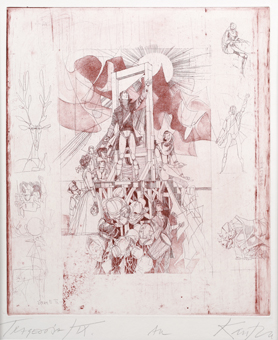
The Tragedy of Man, Scene VIII (In Prague)
1966
etching, aquatint, paper
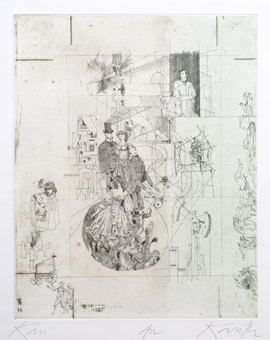
The Tragedy of Man, Scene IX (In Paris)
1966
etching, aquatint, paper
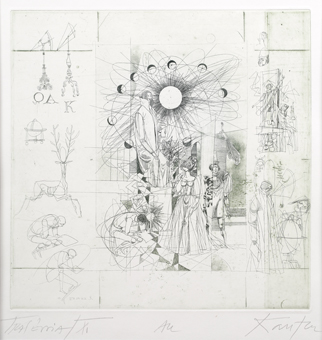
The Tragedy of Man, Scene X (In Prague)
1966
etching, aquatint, paper
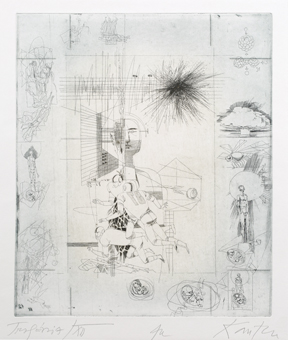
The Tragedy of Man, Scene XI (In London)
1966
etching, aquatint, paper
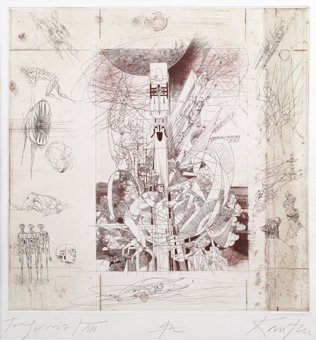
The Tragedy of Man, Scene XII (Phalanstery)
1966
etching, aquatint, paper
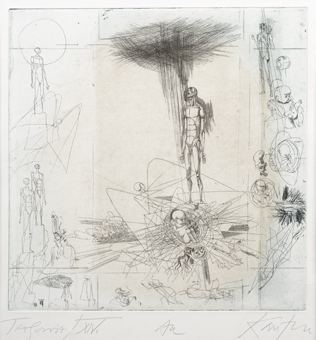
The Tragedy of Man, Scene XIII (Space)
1966
etching, aquatint, paper
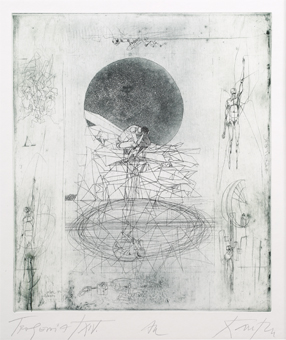
The Tragedy of Man, Scene XIV (Landscape Covered with Snow and Ice)
1966
etching, aquatint, paper
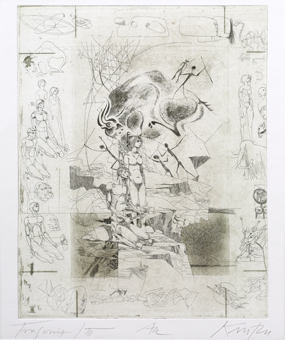
The Tragedy of Man, Scene XV (End of the Dream)
1966
etching, aquatint, paper

